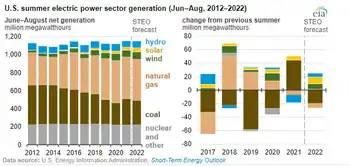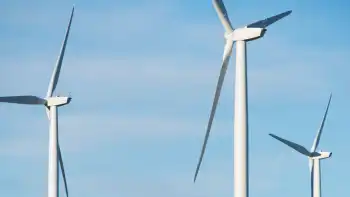NStar to offer wind energy - for a price
The state Department of Public Utilities approved a program that allows customers to buy half or all of their electricity from wind farms in Maine and upstate New York. Customers who opt for the green power can pay an additional $4.25 a month to buy half their electricity from wind farms or $7.25 for all of it, NStar said.
NStar will begin enrolling customers in NStar Green immediately, with service to begin in July, said spokeswoman Caroline Allen. The program is the first of its kind in Massachusetts and one of the few nationwide, according to the Conservation Law Foundation, an environmental advocacy group in Boston.
Other utilities have launched so-called green power programs, such as National Grid USA's GreenUp. But National Grid's program and others merely refer customers to third-party organizations that collect what are effectively voluntary contributions to indirectly subsidize various green energy installations around the country, including solar and hydroelectric power. About 6,000 of National Grid's 1.3 million Massachusetts customers participate.
NStar, however, will buy power directly from the two wind farms, the 195-turbine Maple Ridge wind farm in northern New York state and the 44-tower wind project at Kibby Mountain in Maine, expected to begin operating next year. The Boston utility signed 10-year contracts to buy a total of 60 megawatts from the wind farms. That's enough to power about 60,000 homes.
"What makes this program unique is the fact that it's transparent - customers know exactly where their renewable energy is being generated," said Thomas J. May, NStar chief executive. "The approval of NStar Green represents a major step forward in the effort to increase the amount of clean electricity that's available to customers in our region."
Utilities across the country are seeking alternatives to generating power from fossil fuels, such as oil, natural gas, and coal, because of global warming concerns. These fuels emit carbon dioxide, which traps the sun's heat in the atmosphere, causing temperatures to rise. It's increasingly likely, too, that new regulations will be put in place to reduce carbon dioxide emissions.
NStar, with 1.1 million electric customers in Eastern and Central Massachusetts, proposed the wind power program last summer, working with Attorney General Martha Coakley and advocacy groups, including the Union of Concerned Scientists and the Conservation Law Foundation, to develop it. Sue Reid, CLF staff attorney, said long-term contracts are particularly important because they help wind farms obtain financing. They also increase demand for wind power, which ultimately will lead to more wind projects, she said.
"The long-term contracts that are at the heart of this initiative are key catalysts to bringing renewable energy online and are a prime example of how we can use market mechanisms to combat climate change," Reid said.
Information about enrolling in the program is available on NStar's website, nstar.com, or by calling 1-800-592-2000.
Related News

Demand for electricity in Yukon hits record high
WHITEHORSE - A new record for electricity demand has been set in Yukon. The territory recorded a peak of 104.42 megawatts, according to a news release from Yukon Energy.
The new record is about a half a megawatt higher than the previous record of 103.84 megawatts recorded on Jan. 14, 2020.
While in general, over 90 per cent of the electricity generated in Yukon comes from renewable resources each year, during periods of high electricity use each winter, Yukon Energy has to use its hydro, liquefied natural gas and diesel resources to generate the electricity, the release says.
But when it comes to…





